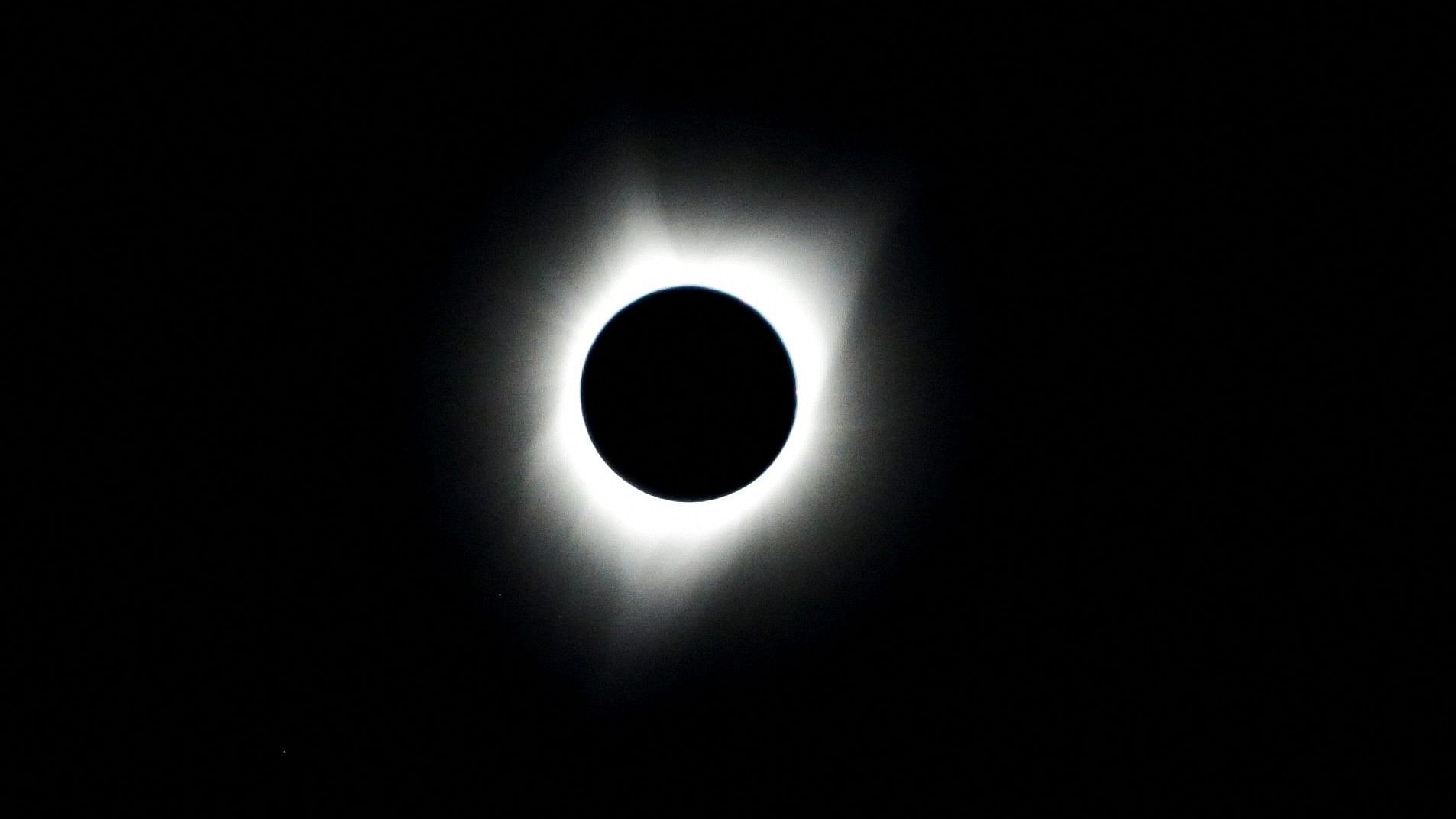
Representative image of a solar eclipse.
Credit: Reuters Photo
Excitement has overtaken North America where many people are awaiting the total solar eclipse tomorrow.
In a total solar eclipse, the moon passes between the Sun and Earth, entirely covering the face of the Sun along a small path of our planet's surface. This is called the "path of totality." The daytime sky turns dark, akin to dusk or dawn, and nocturnal animals have been known to wake up, confused into believing night has arrived.
In places along the path of totality, people will be able to view the sun's corona - the star's outer atmosphere - that typically is not visible because of solar brightness. People observing from outside the path of totality will see a partial eclipse in which the moon obscures most of the sun's face but not all of it.
As the eclipse fever builds, those four minutes 28 seconds mean different things for different beings.
As per a report in the BBC, researchers are all set to fly rockets into the path of the eclipse, watch animals in zoos, send radio signals, and peer into space with massive cameras.
Many animals respond to the eclipse with anxiety and apprehension.
Professor Adam Hartstone-Rose from North Carolina State University is going to head to the zoo in Fort Worth, Texas on Monday to track any strange behaviour in animals from gorillas to giraffes to Galapagos turtles, the publication reported.
During the eclipse in 2017, turtles had suddenly started to mate.
"The flamingos last time did a beautiful thing," the publication reported Adam Hartstone-Rose as saying.
"As the eclipse was building, the adults gathered the chicks into the middle of the flock, and looked into the sky as if they were worried about an aerial predator coming down."
Meanwhile, the gorillas allegedly moved to where they sleep and started their bed time routines.
Tricked by the sudden darkness, Tawny Frogmouth, a nocturnal bird woke up and started looking for food only to go back to sleep after the sun re-appeared.
Usually, the brightness of the Sun makes it hard for the scientists to see the corona however, tomorrow, they will be able to capture images of it.
NASA has planned to fly WB-57 jets along the path of the eclipse to take pictures.
Huw Morgan, professor of Physics at Aberystwyth University noted that a lot of time and money has gone into this four-minute window.
Given that the Sun's activity has the potential to disrupt almost all communications, hundreds of amateur radio operators will join a "listening party" where they will send signals to each other across the world to better understand radio communications.
People in various parts of the world will get to experience more eclipses in the coming months and years, according to NASA.
An annular solar eclipse will occur on Oct. 2 of this year, visible in South America, with a partial eclipse visible in South America, Antarctica, the Pacific Ocean, the Atlantic Ocean and North America.
A partial solar eclipse will occur on March 29, 2025, visible in Europe, Asia, Africa, North America, South America, the Atlantic Ocean and the Arctic Ocean.
A partial solar eclipse will occur on Sept. 21, 2025, visible in Australia, Antarctica, the Pacific Ocean and the Atlantic Ocean.
An annular solar eclipse will occur on Feb. 17, 2026, visible in Antarctica, with a partial eclipse visible in Antarctica, Africa, South America, the Pacific Ocean, the Atlantic Ocean and the Indian Ocean.
The next total solar eclipse will occur on Aug. 12, 2026, visible in Greenland, Iceland, Spain, Russia and a small portion of Portugal, with a partial eclipse visible in Europe, Africa, North America, the Atlantic Ocean, the Arctic Ocean and the Pacific Ocean.
(With Reuters inputs)